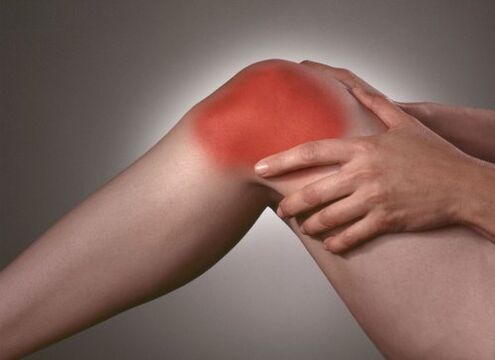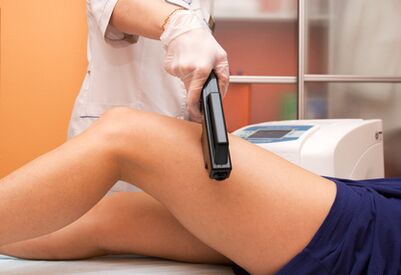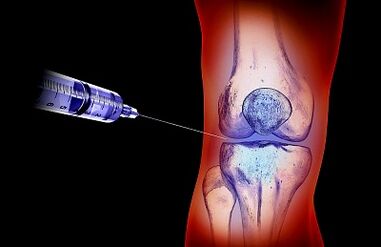
The knee, like the other joints of a person, is made up of bones and cartilage.The cartoon is a smooth, elastic and elastic layer that guarantees the ease of pace and the lack of friction.The damage to the cartilage for chronic wear is calledArthrosis of the knee joint.
There are many factors that lead to the arthrosis of the knee joint:
- genetic predisposition;
- overweight;
- abnormal movement;
- injuries.
For a long time, a person does not suffer pain and only when the arthrosis of the knee leads to the deformation of the deformation, do the first symptoms appear.The patient consults a doctor, but the treatment of an advanced disease can already be successful.
The arthrosis of the knee joint is often a consequence of accidents and injuries, but can only manifest itself after a few years.Therefore, with the slightest suspicion of this disease, it is necessary to consult a doctor.
Symptoms of arthrosis of the knee joint
The symptoms of arthrosis of the knee joint include:

- pain that increases during the activity;
- swelling;
- increase the skin temperature;
- decrease in the mobility of the knee joint;
- The crunch, the crunchy sound that is listened to during the movement.
Pain after periods of inaction is one of the most common symptoms of knee illegal.It is expressed in the morning, when the joints need time to warm up in the right way.After a person is like a bit, the pain attenuates.
Sometimes you can see the first signs of knee arthrosis simply by looking at it.Even if the knee protrudes more than usual, this could be the first sign.The increase in the swelling knee tendency is easy to recognize.The swelling of the finger is often formed above the cup of the knee, since this place is the weakest.This is due to an increase in the accumulation of fluid in the articulation.
The reduction of flexibility in the legs can indicate the arthrosis of the knee joint.Those who were able to touch the glutes of the buttocks, standing on one leg, but can go halfway today, they should consult a doctor.The thigh muscles can start working more difficult than before, due to the illegal knee, becoming shorter and start hurting.These muscles must be elongated and strengthened to restore previous functions.
Another sign of arthrosis of the knee joint is the decrease in muscle strength in the legs.
Arthosis transforms cartilage, which is smooth as glass into a rough tissue that looks like a glass card in the early stages.When these surfaces rub each other, you can feel the creak and friction sounds in the articulation.
How is the arthrosis of the knee diagnosed?

The diagnosis of knee osteoarthritis will begin with a medical examination by a doctor.Before taking on, determining what the pain arises to help the doctor make the correct diagnosis.Also, find out if someone has arthritis in your family.
The doctor may prescribe further diagnoses, including:
- Magnetic resonance imaging (MRI) scans radiographies that can show bones and cartilage damage, as well as the presence of bone spurs;
- Magnetic resonance imaging can be ordered when X -rays do not provide a clear cause of joint pain or when radiographs show that other types of joint tissue can be damaged.Doctors can use blood tests to exclude other conditions that can cause pain, such as rheumatoid arthritis, another type of arthritis caused by a compromised immune system.
How is the arthrosis of the knee joint is treated?
The main tasks of the treatment of osteoarthritis of the knee joint are the relief from pain and the return of mobility.
Treatment plan, as a rule, includes a combination of the following actions:
- Weight loss.The loss also of a small amount of weight, if necessary, can significantly reduce knee pain from osteoarthritis.
- Exercise.The strengthening of the muscles around the knee makes the condition of the joints more stable and reduces the pain.Stretching exercises help to maintain furniture and flexible.
- Anesthetic and anti -inflammatory drugs:Acetaminophen, ibuprofen or sodium.If the medicines do not bring relief, the doctor can give you a prescription of another anti -inflammatory drug to relieve pain.
- Injections of corticosteroids or hyaluronic acid in the knee.Steroids are powerful anti -inflammatory drugs.Hyaluronic acid is generally present in the joints as a type of lubricant, but with joint diseases it is categorically lacking.
- Alternative treatment methods.Some alternative treatment methods that may be effective include: capsaicin creams, acupuncture or additives, including glucosamine and chondroitin.
- Using devices such as parenthesis.There are two types of parenthesis: those that download the stanked parenthesis, thus removing the weight on the side of the knee;And brackets of "support" that provide support for the entire knee.
- Physical activity and work therapy. If you have problems with daily activities, physical exercises or work therapy can help.Physiotherapists teach you how to strengthen muscles and increase flexibility in the joint.Specialists will make up a series of exercises suitable for you to perform home to reduce pain.
- Surgery.When other treatment methods do not work, surgery is the only option to get rid of the disease.

Is surgery used to treat knee arthrosis?
For the treatment of osteoarthritis of the knee with the help of the surgical intervention, the following options are possible: arthroscopy, osteotomy, endoprothetic.
TOarthroscopyA small telescope (arthroscope) and other small tools are used.The operation is performed through small engravings.The surgeon uses an arthroscope so that the joint can be seen.After the surgeon can remove the cartilage or the damaged free particles, it can clean the bone surface.The procedure is often used on patients aged 55 (and younger) to delay a more serious operation.
Osteotomy- This is a procedure that tries to align the knee, changing the shape of the bones.This type of operation can be recommended in case of damage, first of all, in an area of the knee.It can also be recommended if you have damaged the knee and has not been restored.Osteotomy does not have a constant effect and surgery may be necessary in the future.
Endopropostetic- This is a surgical procedure in which the joints are replaced by artificial parts of metals or plastic.The replacement can include a side or the whole knee.As a rule, people over the age of 50 and a strong form of osteoarthritis require replacement.The operation could be requested later, if the replacement is consumed after several years, but with modern results, most of the prostheses have been needed for more than 20 years.The operation has risks, but the results are generally very good.



















